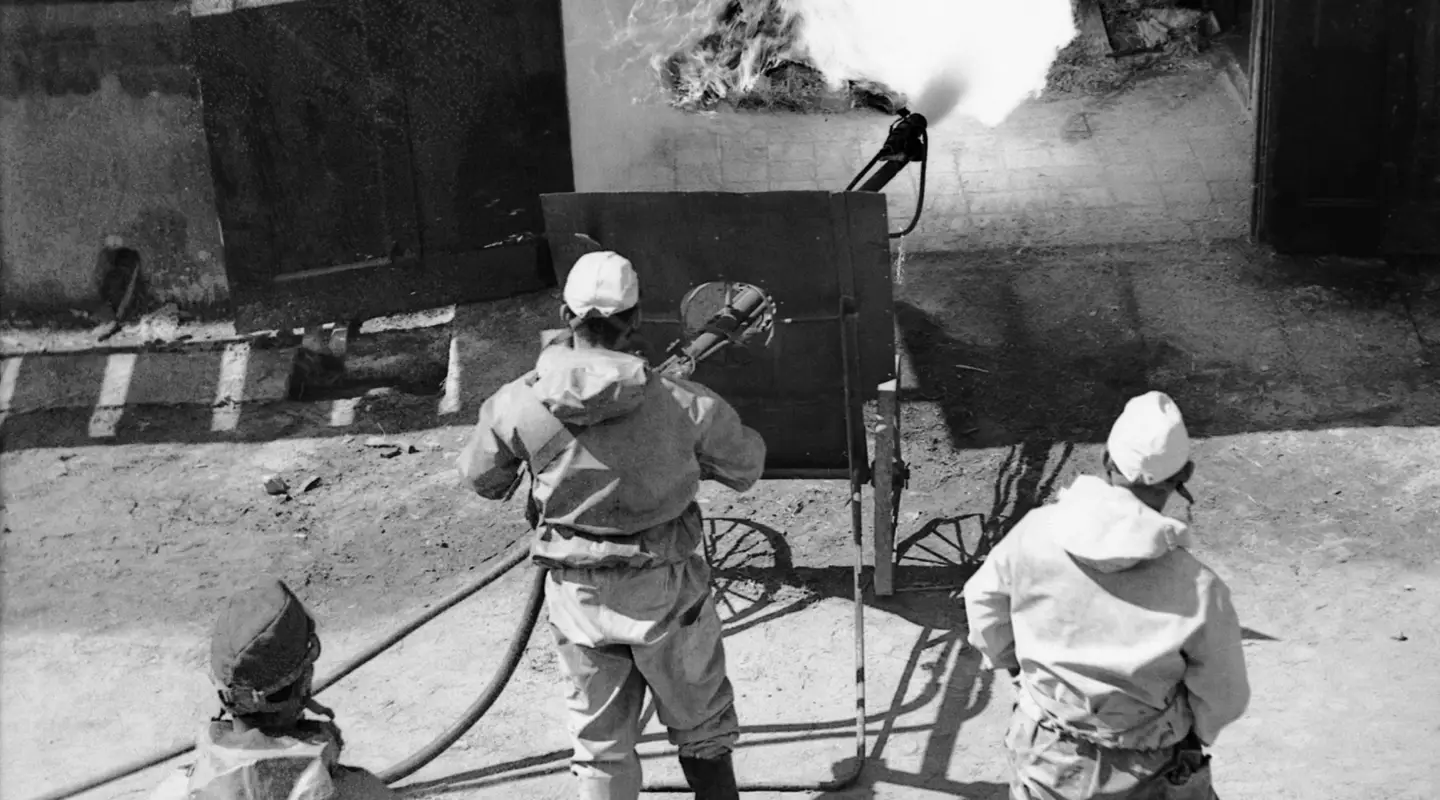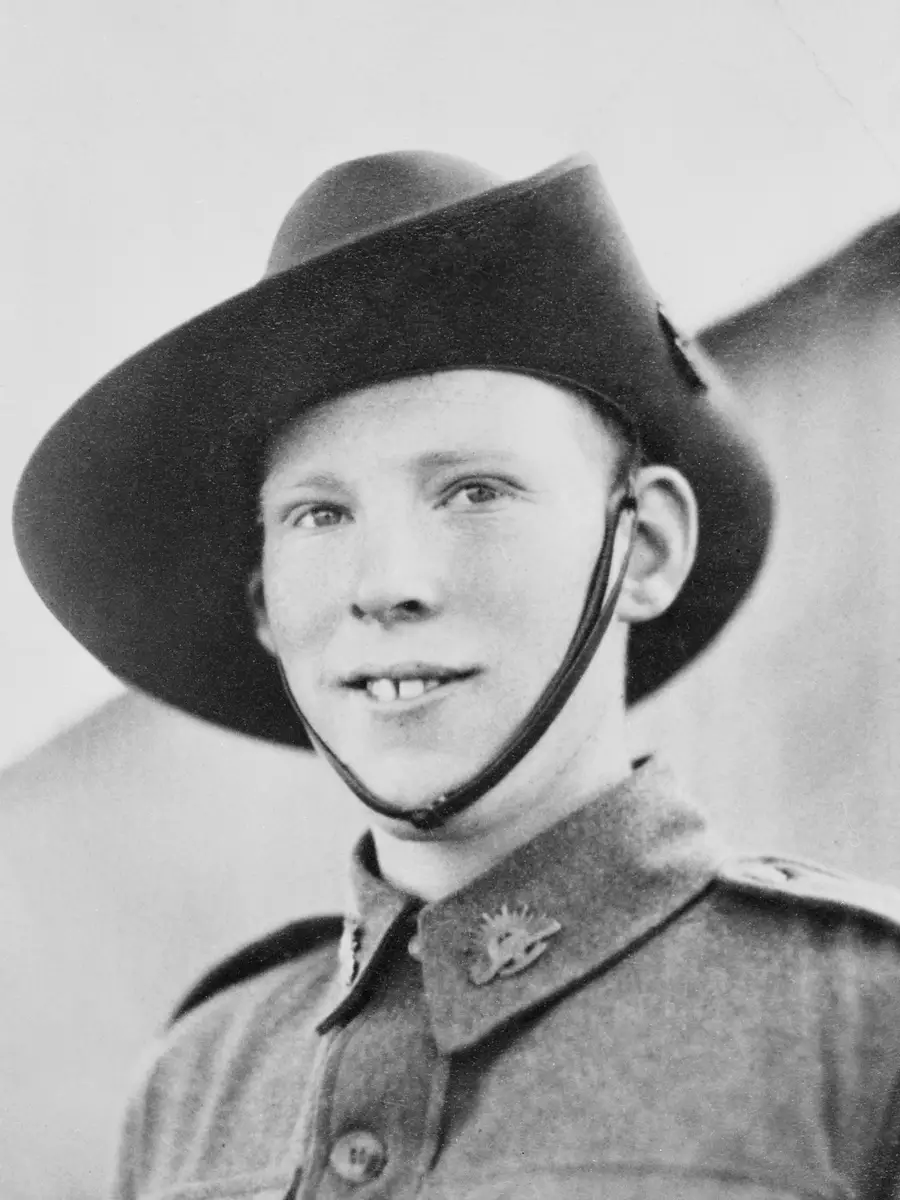After hostilities in the Pacific ceased in 1945, the messy and painstaking work of cleaning up munitions in the former theatres of war had to begin.
After hostilities in the Pacific ceased in 1945, the messy and painstaking work of cleaning up munitions (military weapons, equipment and ammunition) in the former theatres of war had to begin. For Australians based in Japan as part of the British Commonwealth Occupation Force (BCOF), Operation Lewisite, a clean-up of chemical weapons and munitions stockpiled in Japan, was a significant project.
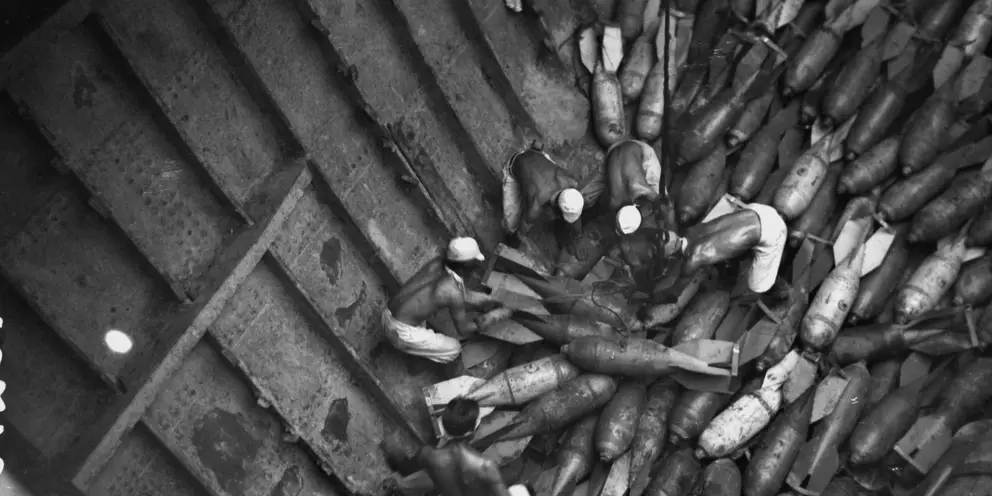
KG Mustard gas bombs, minus detonators, being stowed in the hold of the ship Shintonmaru. Photographer: Alan Queale
In May 1946, chemical weapons dumps in the Hiroshima Prefecture were surveyed, producing a plan to consolidate all remaining munitions on the tiny island of Ōkunoshima in the Seto Inland Sea, where a factory had secretly produced Japan’s chemical weapons since 1927. The Japanese chemical company Teikoku Rayon was retained to provide expertise and labour for Operation Lewisite.
Disposal would be achieved by one of three methods: burn, bury, or dump at sea. Japanese engineers, chemists and contract labourers spent six months working under BCOF supervision on Ōkunoshima.
The project needed a substantial labour force, with between 192 and 846 workers working shifts around the clock. The work was dangerous as well as physically taxing; a number of personnel suffered poison gas skin burns and chemical pneumonia, as well as malaria.
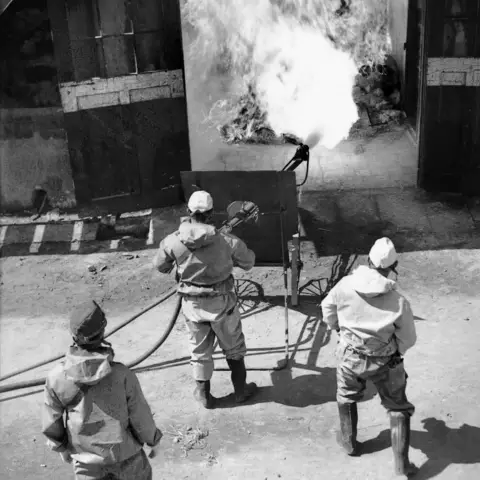
Japanese workmen wearing gas masks directing jet from a mobile flame-thrower towards a pile of gasoline-soaked debris. c. 1947 Photographer: Alan Queale

A notice in English and Japanese reads 'Out of Bounds to all ranks, Poison Gas'. Photographer: Alan Queale
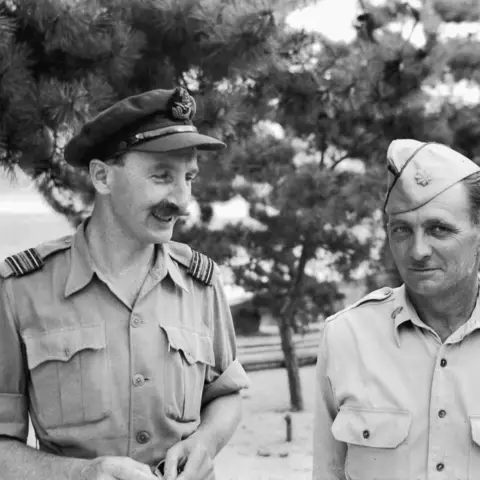
Squadron Leader J.P Redmond and Major W.E Williamson were in charge of Operation Lewisite. Photographer: Alan Queale
Some workers were equipped with gas masks and protective clothing, which was cumbersome in the summer heat. A medical staff of three doctors, a pharmacist and seven nurses also proved essential.
An Australian official photographer with BCOF ’s Military History Section (MHS), Alan Queale, went to Ōkunoshima four times in 1946 and 1947 to document the clean-up operation. Queale had been a keen amateur, photographing throughout his service in the Middle East and New Guinea, before he was recruited to the MHS in November 1945 to document BCOF’s work in Japan.
The photographs he took on Ōkunoshima capture the scale and the challenges of the work, as well as the contrast between nature and technology, and the incongruity of these toxic materials’ presence in a serene island landscape.
Operation Lewisite wound up on 30 November 1946. Ōkunoshima now hosts a small museum, the Poison Gas Museum, to explain the island’s history for visitors.
